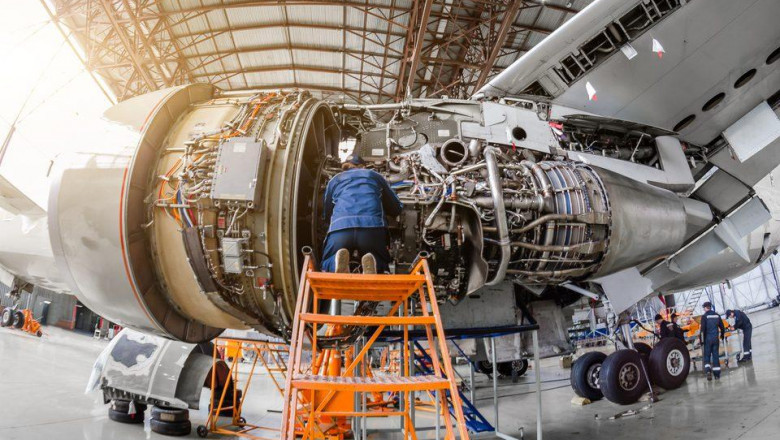views
The aircraft engines market is a crucial segment of the aerospace industry, responsible for the design, manufacturing, and maintenance of engines that power commercial, military, and private aircraft. However, despite the industry's significant growth, various challenges continue to impact the aircraft engines market. These challenges range from technological and economic factors to environmental and regulatory concerns, all of which influence the market's trajectory and development.
1. Rising Fuel Prices and Efficiency Demands
One of the most prominent challenges facing the aircraft engines market is the increasing pressure to improve fuel efficiency. As fuel costs continue to rise, airlines and operators are seeking engines that consume less fuel, reduce operational costs, and lower carbon emissions. Manufacturers are investing in next-generation technologies, such as geared turbofan engines and open-rotor designs, to meet these demands. However, developing such advanced systems requires substantial investments in research and development (R&D), and the timeline for bringing these innovations to market can be lengthy.
Fuel efficiency improvements are not only a matter of cost reduction but also of environmental impact. The aviation industry is one of the largest contributors to global greenhouse gas emissions, and engine manufacturers are under pressure to create cleaner, more sustainable technologies. This push for sustainability is driving the development of hybrid and electric propulsion systems, but these technologies are still in the early stages and face significant hurdles in terms of energy density, weight, and infrastructure.
2. Regulatory and Environmental Constraints
The global regulatory environment is another major challenge for the aircraft engines market. Governments around the world are tightening emission standards for both new and existing aircraft. The International Civil Aviation Organization (ICAO) has set ambitious goals to reduce the aviation industry's carbon footprint, and these regulations are becoming stricter. Manufacturers are now required to design engines that comply with these environmental standards, adding complexity to the development process.
In addition to fuel efficiency, manufacturers must consider noise reduction and particulate matter emissions, both of which are subject to increasing regulation. Noise regulations, in particular, are becoming stricter in urban areas near airports, which has led to the development of quieter engines. These stringent regulatory requirements necessitate significant investment in R&D to meet global standards, which can be a financial burden, particularly for smaller manufacturers.
3. Supply Chain Disruptions
The aircraft engines market, like many other industries, is highly susceptible to disruptions in the global supply chain. The COVID-19 pandemic brought significant attention to vulnerabilities in the supply chain, with delays in production, shortages of critical components, and a reduction in demand for new aircraft. While demand for air travel and aircraft engines is recovering, the supply chain remains fragile due to geopolitical tensions, trade restrictions, and raw material shortages.
For instance, the availability of rare earth metals and other specialized materials needed for advanced engine components is becoming a bottleneck. Supply chain disruptions not only delay production timelines but also increase costs, impacting both manufacturers and airlines. The shift towards localized supply chains and strategic partnerships aims to mitigate some of these risks, but global sourcing remains integral to the market’s functionality.
4. Technological Complexities and Innovation Costs
The continuous push for technological innovation poses another challenge for the aircraft engine market. While advancements such as more powerful and efficient engines, advanced materials, and additive manufacturing have transformed the industry, the pace of technological development is often slower than desired. The need for more robust engines that can handle longer flight durations, higher passenger loads, and demanding operational conditions requires constant improvements to engine design.
However, these innovations often come with high costs. Research and development in the aircraft engine sector require significant financial investments, with no guaranteed returns. Manufacturers must balance the desire for innovation with the reality of limited budgets and resources, making it difficult to prioritize the development of certain technologies over others. For example, the development of hybrid or electric propulsion systems requires a shift in the traditional understanding of engine design, which involves overcoming significant technical and engineering barriers.
5. Market Competition and Consolidation
The aircraft engines market is highly competitive, with several key players, including General Electric, Rolls-Royce, Pratt & Whitney, and Safran, dominating the global landscape. However, competition is intensifying as new entrants, including regional players from emerging markets, seek to gain a foothold in the industry. This competition can lead to price wars, which may impact profit margins and reduce the financial stability of smaller companies.
At the same time, the market is experiencing a trend toward consolidation, with major manufacturers seeking to acquire smaller players to enhance their capabilities and expand their market share. While consolidation can bring economies of scale and improve product offerings, it also means fewer choices for customers and potential limitations in terms of innovation.
6. Skilled Labor Shortages
The complexity of aircraft engine manufacturing demands highly specialized skills, and there is a growing shortage of skilled labor in the aerospace sector. As demand for advanced engines increases, the need for engineers, technicians, and other professionals with expertise in materials science, aerodynamics, and propulsion systems also rises. Addressing this skills gap is critical for ensuring the continued growth of the aircraft engines market, but it requires significant investment in training and education.
Conclusion
The aircraft engines market faces a myriad of challenges, from rising fuel prices and regulatory pressures to technological complexities and global supply chain disruptions. As the aviation industry strives for greater efficiency, sustainability, and innovation, engine manufacturers must navigate these obstacles carefully. While the market offers immense growth potential, overcoming these challenges will require significant investment in R&D, new technologies, and the development of a skilled workforce. Only time will tell how the industry adapts to these ongoing challenges and what the future holds for aircraft engine technology.


















![Fitness Technology Market [2025-2033] is Growing Rapidly at Upcoming](https://timessquarereporter.com/upload/media/posts/2025-04/15/fitness-technology-market-2025-2033-is-growing-rapidly-at-upcoming_1744711056-s.jpg)



Comments
0 comment